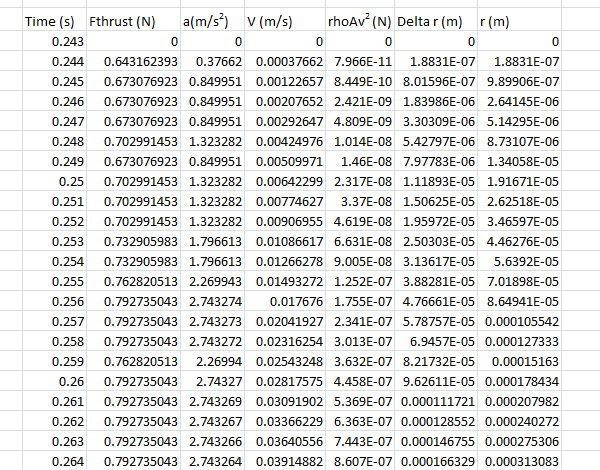The second part of the lab was to figure out what specific information and measurements were needed after we had gotten the data of the thrust force of the rocket. The most obvious of the measurements that were needed were the mass, cross sectional area of the rocket, and the force of thrust. From there we came up with equations that would start with the times and thrust that would lead to finding the maximum height of the rocket. The first equation we needed to start off the kinematics was the acceleration that we found by using newton's second law:
a = (Fthrust-Fg-Drag)/m
With the acceleration found, we can find the velocity by using:
V = v +a*delta(t)
With velocity found, we can find the force of drag by using:
D = rhoAv2
And finally, the distance traveled by the rocket could be found by using the position kinematic equation:
R = r + v*delta(t) + .5a*delta(t)
With all the specific information, information, and equations were found, we were able to put it into an excel spreadsheet and had it do all the work for us:
The top excel shows the start time of when the thrust force of the rocket was greater than the force of gravity. Since the change of time was .001 seconds, the change from one cell to the next was not much of a difference. The maximum height of the rocket was found by finding the time where the rocket came to a stop. The time being the average of two: 7.575 s. It's maximum height was also taken by finding the average of two numbers: 147.26 m.
This lab put into effect Newton's second law in that the net force is the sum of all forces action on the object thus the acceleration vector points in the same direction as the force vector. This lab had minimal sources errors in that most measurements were given. The only source of error would be that the equations used to lead up to finding the maximum height were not entirely correct. Another source of error could be that the logger pro failed to accurately record the data of the force of thrust. But since the maximum height was the same as the one the instructor had, errors were minimal. Another great lab would be to use different type of engines, or different sized rockets.








